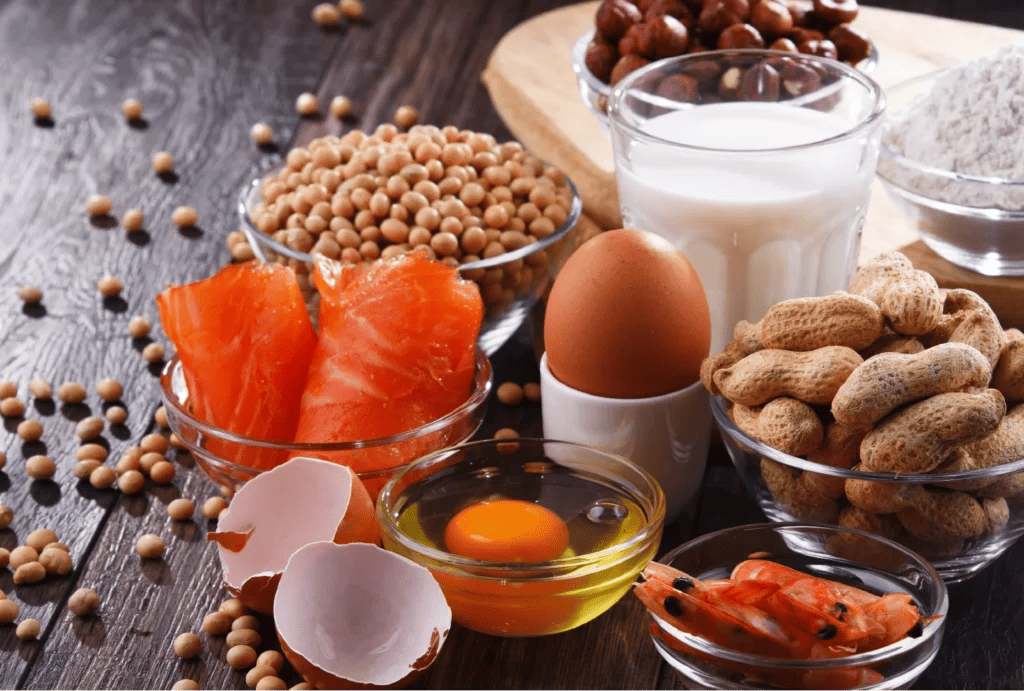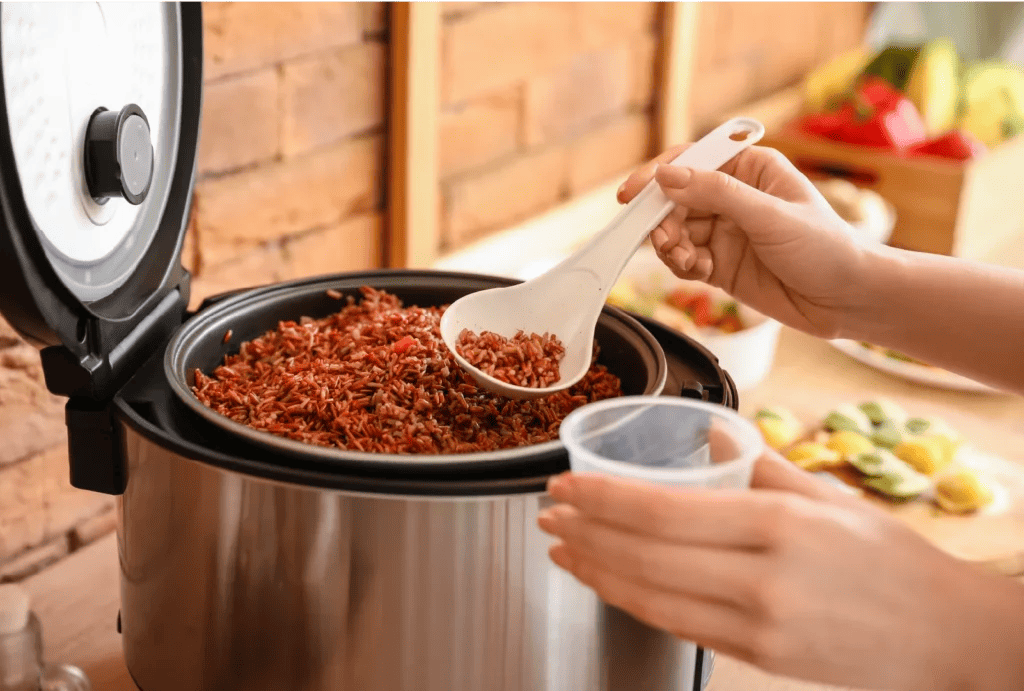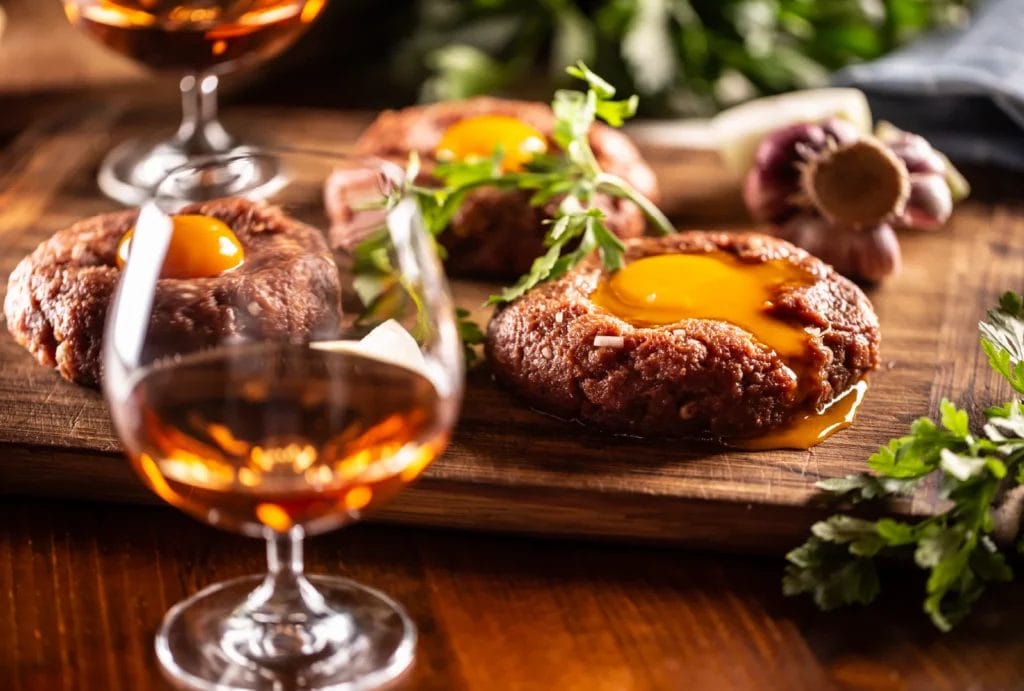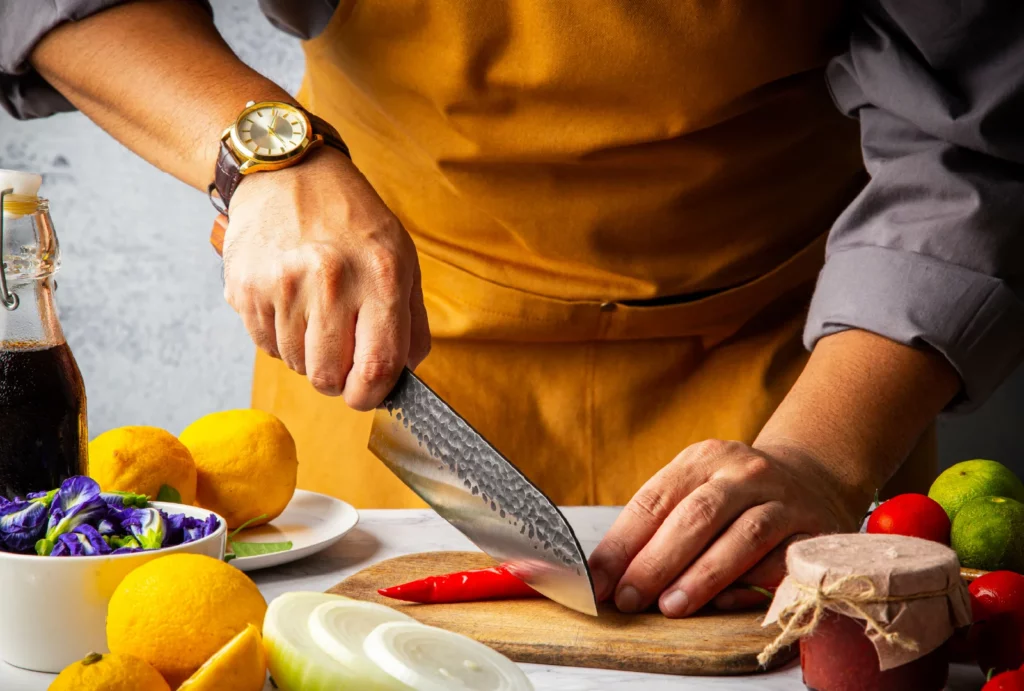- Last Updated
- 6/9/2025
- Alex Hastings
Every job has its risks, and being a personal chef is no exception. No one likes to think about the hazards you face in your line of work, but knowing what they are is the first step towards prevention.
To help you prepare and keep yourself (and your career) safe, let’s take a look at eight different personal chef risks and how to avoid them. Don’t forget to download your free copy of our risk assessment checklist before you go!
8 Common Risks of Being a Chef
Want to know the one upside to risks? They’re often preventable with awareness and preparation.
As you read through each risk, note the tips for how you can prevent these incidents from happening to you, your employees, your clients, and your workspace.
1. Injuries
It won’t surprise you that injuries are a major risk for personal chefs, given that this line of work is known for being physically demanding. Not to mention, you’re often working with sharp objects, heavy machinery, and extreme heat.
Some of the most common injuries chefs experience are:
- Cuts and lacerations
- Burns
- Repetitive motion strains and sprains
- Slips, trips, and falls
How to Prevent This
- Use ergonomic mats and supportive shoes while cooking
- Wear cut-resistant gloves when using knives or sharp tools
- Stretch before work and take regular breaks
- Clean up spills immediately
- Keep walkways and workspaces clutter-free
- Avoid loose-fitting clothing that can snag or catch fire
💡 Insurance Insight
If you have employees, they can suffer the same injuries as you on the job. That’s why many states require employers to have workers compensation insurance, which covers expenses like your employees’ medical bills, rehabilitation costs, and lost wages.
2. Third-Party Injuries
You aren’t the only person at risk of getting hurt because of your job. Other people around you, such as your clients or people you share a commercial kitchen space with, can suffer third-party injuries because of your activities in the kitchen.
Picture this: you’re preparing dinner for your clients at their house. One of them walks into the kitchen, slips on some spilled juice you meant to clean up later, and breaks their wrist. They could sue you over a situation like this.
How to Prevent This
- Keep floors clean and use non-slip mats where possible
- Stay aware of your surroundings
- Place wet floor, hot surface, and other caution signs when needed
- Conduct a safety check in the kitchen before you start working
- Store sharp objects safely and securely
- Avoid clutter in and around your workplace
💡 Insurance Insight
General liability insurance is designed to cover the cost of medical bills and legal fees if you’re involved in a lawsuit over third-party bodily injury.

3. Foodborne Illnesses and Contamination
Anyone working in the food industry is familiar with the risk of food poisoning. It’s why the United States Department of Agriculture (USDA) has guidelines for what temperature certain foods should be stored at or cooked to before they’re safe to eat.
There’s also a risk of contamination, where a foreign substance or allergen comes in contact with the food you prepared. This can also make your clients sick or cause a serious reaction if they have an allergy.
How to Prevent This
- Cook food to USDA-recommended internal temperatures
- Wash your hands before and after handling food and going to the restroom (and require your employees to do the same)
- Clearly label all ingredients
- Verify and document clients’ allergies before cooking for them
- Use separate cutting boards for meat, seafood, poultry, and produce
- Store perishable foods at proper temperatures
💡 Insurance Insight
If a client gets food poisoning or has a reaction to an unlabeled allergen, product liability insurance can protect you if you’re sued.
4. Property Damage
Whether you cook and prepare food for your clients in a commercial kitchen or in their homes, there’s a chance you could damage their property while working.
If a fire breaks out while you’re cooking and damages the walls and nearby appliances, you could be held responsible for paying for repairs and replacements.
How to Prevent This
- Double-check that ovens and burners are turned off after use
- Conduct routine appliance inspections to confirm they’re in working order
- Keep the area around burners and open flames clean and clutter-free
- Alert clients or commercial kitchen owners to any broken or damaged appliances
- Use timers to avoid burning food on the stove or in the oven
- Never leave appliances unattended while in use
💡 Insurance Insight
General liability coverage is designed to cover repairs/replacements to property you damage. It includes damage to premises rented coverage, which can protect you if you rent a space like a commercial kitchen.
5. Stress
Being a chef is hard work. From the moment you start your personal chef business, you need to practice healthy stress management.
One survey of 140 restaurant chefs revealed that 44% experienced a negative impact on their mental health as a result of their career. Other byproducts of stress include:
- Physical health problems that could cause you to call out sick and miss work
- Errors in your work that you wouldn’t otherwise make
- Burnout and dissatisfaction with your line of work
How to Prevent This
- Build days off into your schedule and give yourself time to recharge
- Connect with other personal chefs in your area for support and advice
- Be realistic with your schedule and availability; don’t overbook yourself
- Take intermittent breaks throughout the workday
- Learn stress management techniques like breathing exercises and journaling
- Take care of yourself by sleeping enough, eating well, and hydrating
💡 Insurance Insight
Stress and exhaustion can lead you to show up late to a job or call out sick, and a client could sue you over this because you failed to perform the service they paid for. If that happens to you, professional liability insurance can cover some or all of the cost to defend yourself in court or settle.

6. Equipment Damage or Theft
If you bring your personal business gear from one place to another, there’s a chance it could be damaged, destroyed, or stolen.
For example, you might take your top-of-the-line rice cooker to a client’s house to prepare a specific dish, but it gets damaged in transit. Now you have to drop a couple of hundred dollars on a new one.
How to Prevent This
- Pack your equipment securely before transporting it
- Never leave equipment unattended in public or high-traffic areas
- Keep equipment stored in the same place when not in use
- Add labels with your name and contact information to all equipment
- Take inventory of each piece of equipment you bring with you to a commercial kitchen or a client’s house
- Keep high-value equipment locked away when not in use
💡 Insurance Insight
Tools and equipment (inland marine) coverage is there to help cover the cost of repairing or replacing stolen or damaged equipment that you take with you to various locations.
7. Data Breaches or Cyber Attacks
Most businesses rely on technology in some capacity, especially when it comes to processing client payments or storing your own financial data. This leaves you vulnerable to cyber attacks, which can compromise your business’ and your clients’ personal information.
Common cyber attacks include:
- Data breaches
- Phishing scams
- Ransomware
How to Prevent This
- Update software, devices, and apps regularly
- Use a password manager and create strong, unique passwords
- Educate yourself on identifying phishing scams
- Enable two-factor authentication whenever possible
- Back up important client and business data to a secure external drive
- Only process payments via a secure, encrypted platform
💡 Insurance Insight
Cyber attacks can cost you. You may spend thousands of dollars trying to recover stolen data, and clients can sue you after their information is compromised. Cyber liability insurance is there to help pay for expenses related to data breaches, phishing, and more.

8. Alcohol-Related Accidents
How to Prevent This
- Refuse service to visibly intoxicated clients or guests
- Serve snacks alongside drinks
- Offer non-alcoholic drink options, including plenty of water
- Check IDs before serving guests or clients’ family members
- Offer to schedule a rideshare or taxi for guests who have been drinking
- Take a safe serving course like Training for Intervention ProcedureS (TIPS)
💡 Insurance Insight
You need liquor liability insurance if you serve alcoholic beverages to your clients. Alcohol-related claims are excluded from general liability policies, but liquor liability can financially protect you.
How to Conduct a Personal Chef Risk Assessment
Not every personal chef faces the same set of risks, so it’s important to conduct your own assessment to determine what your biggest vulnerabilities are.
Follow these six steps to assess your risks:
- Identify potential hazards: This can be anything from repetitive motions you perform on the job to the chance of a data breach compromising your customers’ data
- Determine who is at risk of being harmed: This could include yourself, your clients, other third parties (e.g., your clients’ party guests), or even property.
- Assess your risk level: Decide if there is a low, medium, or high likelihood of a certain incident occurring and what the impact of that would be, from minor to severe.
- Document your assessment with a checklist: Use our free risk assessment checklist to record your findings (download below!). Keep copies of this checklist for future reference.
- Incorporate risk mitigation strategies: Based on the risks you identify, use the tips provided above to take preventative measures.
- Reassess regularly: Risk assessments should be conducted whenever you work in a new location or experience a change in your work habits (such as getting new equipment or taking on new clients). At the very least, conduct one annually.
All of the above will be much easier with our handy risk assessment checklist in hand! Get yours today for free.
Why Personal Chefs Need Liability Insurance
As you can see, the working conditions of personal chefs leave you vulnerable to a number of risks. These risks can lead to expensive claims that could force you to bring your operations to a halt while you deal with them — temporarily or permanently.
While liability insurance can’t prevent risks, it can help you handle the fallout if something goes wrong. FLIP’s base personal chef policy includes essential coverages, like:
- General liability
- Product liability
- Personal and advertising injury
- Damage to premises rented
These coverages can financially shield you from third-party liability claims, where you might be forced to pay for medical bills, repairs/replacements to damaged property, legal fees, and more.
Plus, many clients and commercial kitchens require you to have an active general liability policy. Being insured earns you access to more opportunities to expand your business.
Learn more about personal chef liability insurance and discover how you can personalize your policy and get a free quote in 10 minutes or less!
FAQs About Personal Chef Safety
What Are Some Examples of Common Personal Chef Liability Claims?
- A client trips over a bag of rice you left on the kitchen floor and injures themselves
- Your client and their family get food poisoning from chicken you didn’t realize was undercooked
- While deep frying potatoes in the commercial kitchen you rent, you accidentally start a grease fire and damage the walls
- You unknowingly serve wine to a minor at a small family party your client is hosting
- Your payment processing platform falls victim to a data breach, compromising your clients’ sensitive information
How Can Chefs Maintain a Work-Life Balance While Working a Demanding Job?
- Clearly define your working hours and stick to them
- Determine the number of clients you can serve or events you can realistically work each week
- Be okay with saying no if a job isn’t worth the stress it will cause you or is too last-minute for you to prepare for
- Protect time to spend with friends and loved ones each week
- Seek advice and moral support from other chefs in your network when needed

Alex Hastings
Seattle-based copywriter and (WA) licensed insurance agent Alex Hastings leverages her experience as a lover of fast-casual food, baked goods, and iced oat milk lattes. She holds a B.A. in Creative Writing from Western Washington University. Before working at Veracity, she was a retail copywriter at Zulily and an English language teacher in South Korea. Alex is fully trained on FLIP insurance coverages and writes content that connects food and beverage business owners with the policies they need.
Seattle-based copywriter and (WA) licensed insurance agent Alex Hastings leverages her experience as a lover of fast-casual food, baked goods, and iced oat milk lattes. She holds a B.A. in Creative Writing from Western Washington University. Before working at Veracity, she was a retail copywriter at Zulily and an English language teacher in South Korea. Alex is fully trained on FLIP insurance coverages and writes content that connects food and beverage business owners with the policies they need.

